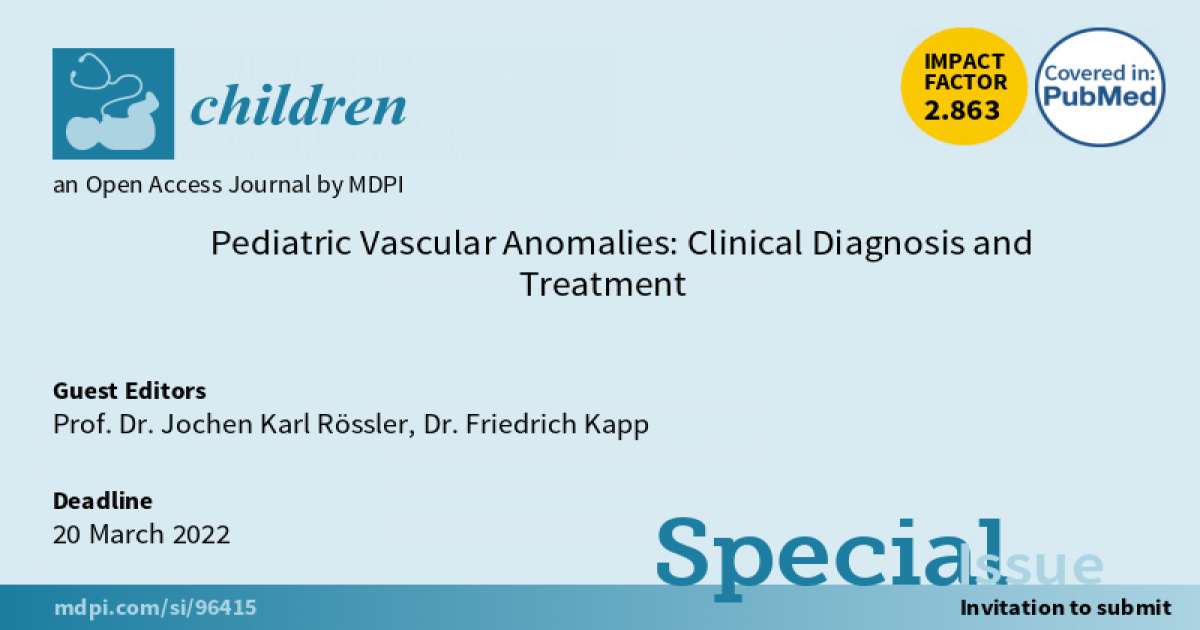Pediatric Vascular Anomalies: Clinical Diagnosis and Treatment
A special issue of Children (ISSN 2227-9067). This special issue belongs to the section "Oncology and Hematology".
Deadline for manuscript submissions: closed (20 March 2022) | Viewed by 7999

Special Issue Editors
Interests: vascular anomalies; pediatric solid tumors; rare tumors; personlized medicine
Special Issue Information
Dear Colleagues,
It is a great honor to invite you to collaborate on this first Special Issue on Pediatric Vascular Anomalies. We are hoping to leverage the experience of seasoned clinicians and emerging young talent around the world to build an exciting issue with interesting contributions.
We are hoping to create a broad-based, international, and interdisciplinary collection of manuscripts on the most pressing problems in Pediatric Vascular Anomalies. The diagnosis of most vascular anomalies is realized at the pediatric age. Most of them are very rare. In the last few years, new medical treatments have entered the field of vascular anomalies, which has been dominated for many years by surgical, interventional radiological, and other local therapeutic approaches. Lately, a personalized medical strategy has been possible due to new findings in biology and genetics regarding vascular anomalies.
Our vision is to update the diagnostic and therapeutic measures used to treat vascular anomalies, and for this we need your expertise.
Prof. Dr. Jochen Karl Rössler
Dr. Friedrich Kapp
Guest Editors
Manuscript Submission Information
Manuscripts should be submitted online at www.mdpi.com by registering and logging in to this website. Once you are registered, click here to go to the submission form. Manuscripts can be submitted until the deadline. All submissions that pass pre-check are peer-reviewed. Accepted papers will be published continuously in the journal (as soon as accepted) and will be listed together on the special issue website. Research articles, review articles as well as short communications are invited. For planned papers, a title and short abstract (about 100 words) can be sent to the Editorial Office for announcement on this website.
Submitted manuscripts should not have been published previously, nor be under consideration for publication elsewhere (except conference proceedings papers). All manuscripts are thoroughly refereed through a single-blind peer-review process. A guide for authors and other relevant information for submission of manuscripts is available on the Instructions for Authors page. Children is an international peer-reviewed open access monthly journal published by MDPI.
Please visit the Instructions for Authors page before submitting a manuscript. The Article Processing Charge (APC) for publication in this open access journal is 2400 CHF (Swiss Francs). Submitted papers should be well formatted and use good English. Authors may use MDPI's English editing service prior to publication or during author revisions.
Keywords
- vascular anomalies
- lymphatic malformations
- venous malformations
- arterio-venous malformations
- hemangioma
- hemangioendothelioma







